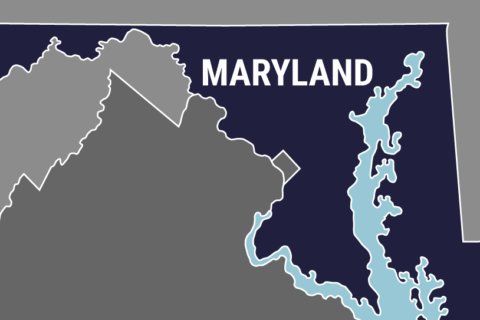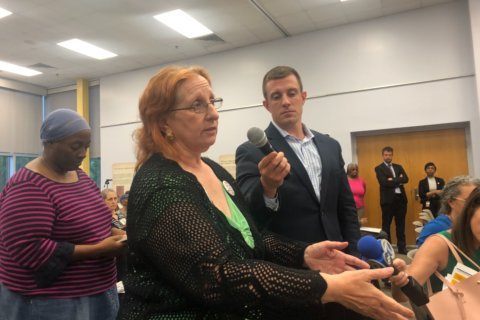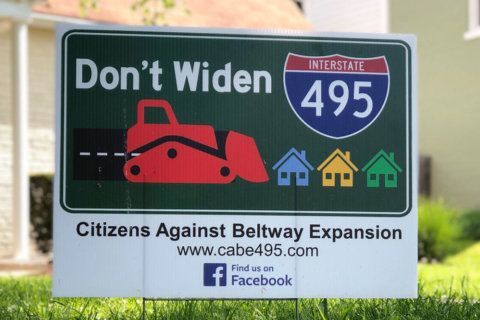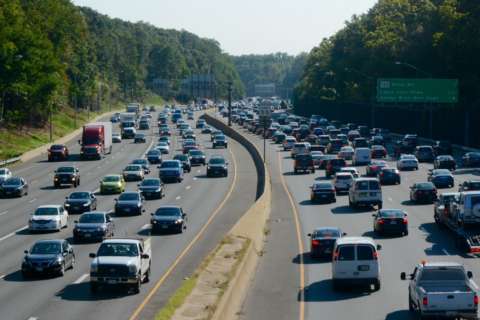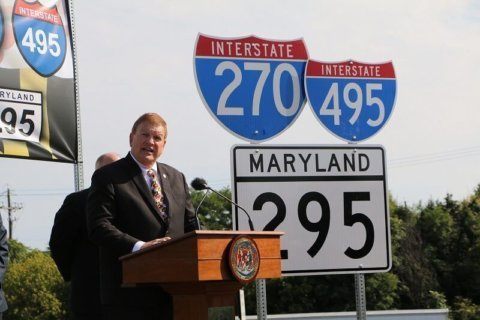This article was republished with permission from WTOP’s news partners at Maryland Matters. Sign up for Maryland Matters’ free email subscription today.
This content was republished with permission from WTOP’s news partners at Maryland Matters. Sign up for Maryland Matters’ free email subscription today.
After a contentious three-hour public hearing and equally heated debate, a divided Maryland Board of Public Works voted Wednesday to approve Gov. Larry Hogan’s proposal to create a public-private partnership to widen two major interstates in the historically congested D.C. suburbs.
State Comptroller Peter V.R. Franchot (D) joined with Hogan in supporting the measure; state Treasurer Nancy K. Kopp (D) voted against it.
But bowing to public criticism, particularly among Montgomery County elected officials and civic activists, Hogan said he would “regrettably” flip the order of the three phases of the proposed highway expansion, meaning the Interstate 270 widening would likely take place before the widening of the Capital Beltway in Montgomery County.
Expansion of the Beltway in Prince George’s County would be the third phase.
Hogan said the change in order would give state officials more time to work with leaders in Montgomery County who have criticized the idea of putting more cars on the road and have expressed fears that highway expansion would result in homes and parkland near the Beltway being razed.
Hogan observed that the I-270 widening has been less controversial in the community.
“This will allow a couple more years of input and study and debate and more time for the overwhelming majority of citizens and the hundreds of thousands of commuters who sit in that traffic to convince their local leaders that they desperately want to relieve this traffic congestion on the Beltway,” he said.
The proposal to add two lanes in each direction to the Beltway and I-270 is one of the most controversial to come before the Board of Public Works in years. The Hogan plan would establish a public-private partnership to expand the highways with additional toll lanes. A private company would pocket some of the toll revenue.
The proposal has generated unprecedented political heat in Montgomery County and among many Prince George’s County elected officials in recent months.
Montgomery County Executive Marc B. Elrich (D) testified in opposition to the project Wednesday, provoking blunt exchanges with Hogan.
The governor also appeared dismissive of many of Kopp’s questions and objections — and he has suggested that environmental groups, elected officials and civic leaders who oppose his highway expansion plans are in effect condemning residents to more traffic jams.
“I’ve been accused of loving congestion. I do not love congestion,” Kopp shot back.
Franchot, a regular Hogan ally, praised the governor’s proposed compromise, calling it “divine intervention” and “an absolute game-changing amendment.”
Franchot suggested that the extra time will give the Hogan administration and Montgomery County leaders an opportunity to come together and that it “opens up a very collaborative approach on actually making progress on something that has lingered out there for years.”
State and Montgomery County officials agree that the American Legion Bridge, which connects Maryland and Virginia along the Beltway, just before the I-270 spur, should be widened first. But the bridge expansion will now be part of the second phase of the highway project — a consequence, Hogan said, of Montgomery County officials’ objections.
“I’d love to build a bridge,” Hogan said. “My No. 1 priority is a bridge.”
Kopp questioned why the bridge couldn’t be part of the first phase of construction. She also said she could not vote for the highway widening proposal because the Board of Public Works hasn’t received sufficient information from state transportation officials about the volume of traffic the highway expansion would bring, the amount of pollution it would generate or save, or estimates about the revenues the toll lanes would generate.
Hogan said the highway widening plan “will result in less traffic, more peace of mind, cleaner air, and a much better quality of life.”

